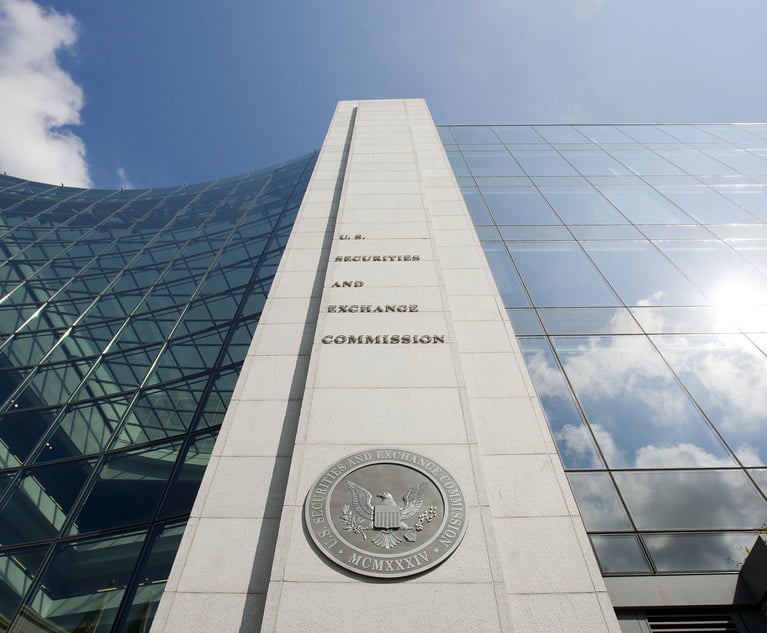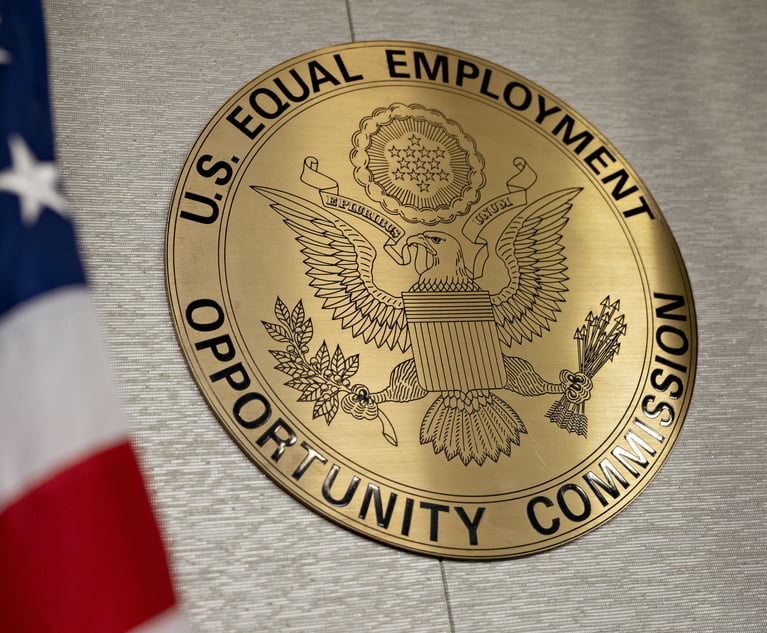Supreme Court remands affirmative action case
After months of anticipation, the Supreme Court on Monday issued its ruling in the affirmative action case Fisher v. University of Texas at Austin.
June 24, 2013 at 09:13 AM
3 minute read
The original version of this story was published on Law.com
After months of anticipation, the Supreme Court on Monday issued its ruling in the affirmative action case Fisher v. University of Texas at Austin. And that ruling was … not really a ruling at all.
Instead, the high court remanded the case back to the 5th Circuit in a 7-1 decision holding that the appeals court “did not hold the university to the demanding burden of strict scrutiny” required by the previous affirmative action cases Grutter v. Bollinger and Regents of the University of California v. Bakke.
The 5th Circuit found that the university's race-conscious admissions program was constitutional as long as UT adopted it “in good faith.” But writing for the majority, Justice Anthony Kennedy made it clear that the high court believes the program must meet a higher standard to receive a stamp of approval.
“A university must make a showing that its plan is narrowly tailored to achieve the only interest that this Court has approved in this context: the benefits of a student body diversity that 'encompasses a . . . broad array of qualifications and characteristics of which racial or ethnic origin is but a single though important element,'” he wrote.
Abigail Fisher sued UT after it denied her admission, arguing that she was rejected because she is white. The university automatically accepts applicants who graduate in the top 10 percent of their high school classes—which Fisher did not—in an effort to ensure racial diversity. Remaining applicants are admitted or rejected based on multiple factors, including race.
In its 2003 decision in Grutter, the court upheld the University of Michigan Law School's affirmative action program, ruling that the university had a compelling interest in achieving a diverse student body. At that time, the court found that universities could consider race in admissions until the number of minority students reached a “critical mass.”
During oral arguments in Fisher last October, several of the justices, including Chief Justice John Roberts, asked lawyers for both sides to define that “critical mass.” Both sides were reluctant to do so, however, perhaps because by identifying a precise number, they risked establishing a quota system, which the Supreme Court has banned.
Other justices, such as Justice Sonia Sotomayor, argued that black students are still underrepresented at UT-Austin and that studies show that many minority students still feel isolated on campus.
Justice Ruth Bader Ginsburg was the lone dissenter in today's ruling. Justice Elena Kagan recused herself from the case.
For more InsideCounsel coverage of the case, see:
Supreme Court hears arguments in UT-Austin affirmative action case
ABA, businesses to Supreme Court: Let UT-Austin uphold affirmative action
This content has been archived. It is available through our partners, LexisNexis® and Bloomberg Law.
To view this content, please continue to their sites.
Not a Lexis Subscriber?
Subscribe Now
Not a Bloomberg Law Subscriber?
Subscribe Now
NOT FOR REPRINT
© 2025 ALM Global, LLC, All Rights Reserved. Request academic re-use from www.copyright.com. All other uses, submit a request to [email protected]. For more information visit Asset & Logo Licensing.
You Might Like
View All

Trending Stories
Who Got The Work
J. Brugh Lower of Gibbons has entered an appearance for industrial equipment supplier Devco Corporation in a pending trademark infringement lawsuit. The suit, accusing the defendant of selling knock-off Graco products, was filed Dec. 18 in New Jersey District Court by Rivkin Radler on behalf of Graco Inc. and Graco Minnesota. The case, assigned to U.S. District Judge Zahid N. Quraishi, is 3:24-cv-11294, Graco Inc. et al v. Devco Corporation.
Who Got The Work
Rebecca Maller-Stein and Kent A. Yalowitz of Arnold & Porter Kaye Scholer have entered their appearances for Hanaco Venture Capital and its executives, Lior Prosor and David Frankel, in a pending securities lawsuit. The action, filed on Dec. 24 in New York Southern District Court by Zell, Aron & Co. on behalf of Goldeneye Advisors, accuses the defendants of negligently and fraudulently managing the plaintiff's $1 million investment. The case, assigned to U.S. District Judge Vernon S. Broderick, is 1:24-cv-09918, Goldeneye Advisors, LLC v. Hanaco Venture Capital, Ltd. et al.
Who Got The Work
Attorneys from A&O Shearman has stepped in as defense counsel for Toronto-Dominion Bank and other defendants in a pending securities class action. The suit, filed Dec. 11 in New York Southern District Court by Bleichmar Fonti & Auld, accuses the defendants of concealing the bank's 'pervasive' deficiencies in regards to its compliance with the Bank Secrecy Act and the quality of its anti-money laundering controls. The case, assigned to U.S. District Judge Arun Subramanian, is 1:24-cv-09445, Gonzalez v. The Toronto-Dominion Bank et al.
Who Got The Work
Crown Castle International, a Pennsylvania company providing shared communications infrastructure, has turned to Luke D. Wolf of Gordon Rees Scully Mansukhani to fend off a pending breach-of-contract lawsuit. The court action, filed Nov. 25 in Michigan Eastern District Court by Hooper Hathaway PC on behalf of The Town Residences LLC, accuses Crown Castle of failing to transfer approximately $30,000 in utility payments from T-Mobile in breach of a roof-top lease and assignment agreement. The case, assigned to U.S. District Judge Susan K. Declercq, is 2:24-cv-13131, The Town Residences LLC v. T-Mobile US, Inc. et al.
Who Got The Work
Wilfred P. Coronato and Daniel M. Schwartz of McCarter & English have stepped in as defense counsel to Electrolux Home Products Inc. in a pending product liability lawsuit. The court action, filed Nov. 26 in New York Eastern District Court by Poulos Lopiccolo PC and Nagel Rice LLP on behalf of David Stern, alleges that the defendant's refrigerators’ drawers and shelving repeatedly break and fall apart within months after purchase. The case, assigned to U.S. District Judge Joan M. Azrack, is 2:24-cv-08204, Stern v. Electrolux Home Products, Inc.
Featured Firms
Law Offices of Gary Martin Hays & Associates, P.C.
(470) 294-1674
Law Offices of Mark E. Salomone
(857) 444-6468
Smith & Hassler
(713) 739-1250







